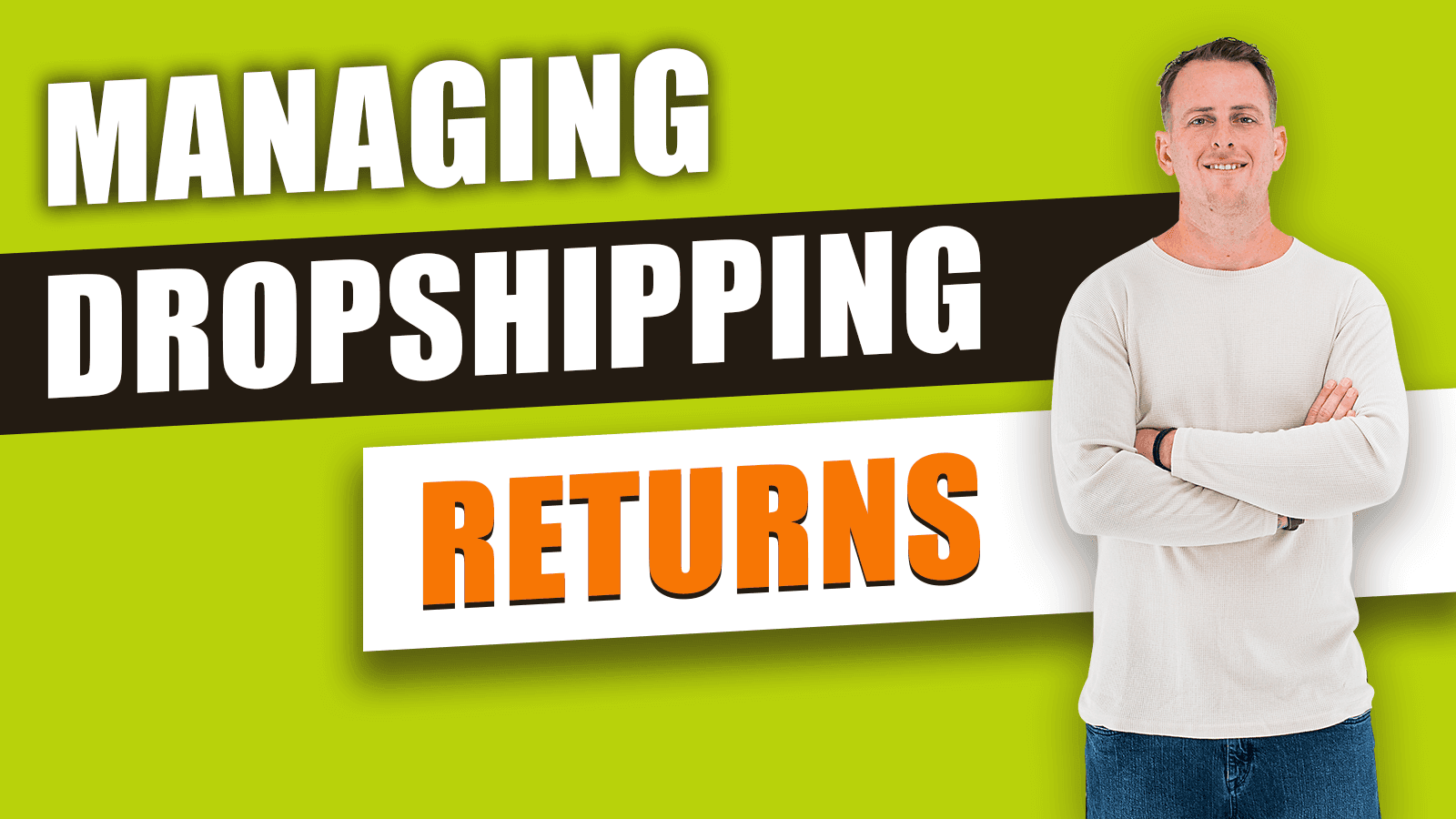You’ve probably heard all about the benefits of dropshipping—low upfront investment, zero inventory, and the ability to run a business from anywhere. Sounds like a dream, right? But what many new entrepreneurs don’t hear enough about is one of the most frustrating aspects of this model: handling returns.
Imagine this: you’ve finally gotten steady orders, customers are rolling in, and then boom! A flood of return requests. Late deliveries, broken items, and wrong sizes start to eat into your profits and credibility. It’s disheartening, especially when you’re doing everything right.
This article will guide you through the smart, sustainable, and emotionally intelligent ways to manage dropshipping returns. Whether you’re a beginner or already scaling your business, this is the roadmap you didn’t know you needed.
Why Returns Matter More Than You Think
In the U.S., nearly 30% of all online purchases are returned. For dropshippers, this rate can climb even higher because of long shipping times, lack of quality control, and communication gaps with suppliers.
Here’s why addressing returns smartly can make or break your business:
Customer Retention: A smooth return process makes 92% of customers more likely to shop again
Brand Reputation: Positive return experiences often get shared in reviews and on social media
Profit Margins: Poor return management drains your earnings fast through refunds and lost sales
Dropshipping might mean outsourcing fulfillment, but you can’t outsource your brand’s reputation. And trust? That’s all you.
Understanding the Root of Most Returns
Before solving the problem, you need to know where it’s coming from. Most dropshipping returns fall into these categories:
Product Quality Issues
Items look different than advertised. Cheap materials or poor construction.Long Shipping Times
Especially common with suppliers based overseas (e.g., China).
Customers feel misled when delivery takes 20 to 30 days.Incorrect Orders
Wrong color, size, or completely different item.Damaged Goods
Poor packaging leads to crushed, broken, or malfunctioning products.Unclear Sizing (for apparel and accessories)
Different sizing charts lead to misfits and dissatisfaction.
Each return is not just a lost sale; it’s a learning opportunity.
Key Impacts of Poor Return Management
Let’s break down what happens when you ignore or mismanage returns:
Lost Trust
Customers talk. And when someone posts a TikTok or YouTube video about how your store ghosted them after a faulty delivery, others listen. One bad review can ripple into thousands in lost sales.Chargebacks and Payment Freezes
Too many complaints or refund disputes? Payment processors like Stripe, PayPal, or Shopify Payments may freeze your account or hold funds. That’s not just inconvenient, it’s potentially fatal for your business.Time Sink
Manually responding to angry emails or chasing down suppliers takes time. Time you could use to scale, market, or optimize.Shrinking Profit Margins
Even if you accept returns, you’re often not getting that product back, especially if it’s international. You lose the sale, eat the shipping cost, and sometimes even pay a restocking fee.
So what’s the smart way forward?
Smart Strategies to Handle Dropshipping Returns
1. Set Clear Return Policies From the Start
Be Transparent. Be Fair. Be Firm.
Include:
A clear time frame (e.g., returns accepted within 15 days of delivery)
Conditions for returns (unworn, original packaging, etc.)
Who pays for return shipping
Whether refunds, exchanges, or store credits are issued
Example:
“Due to the nature of our global shipping partners, returns must be initiated within 15 days of receipt. We offer full refunds for defective items or wrong orders. For all other cases, store credit may be issued.”
Make it visible—place it in your footer, product page, and checkout process. Surprises lead to angry customers.
2. Work With Suppliers Who Handle Returns Well
Not all suppliers are equal. Choose ones that:
Offer local warehouses (especially in the U.S.)
Have quick response times
Send clear product pictures and tracking updates
Accept and process returns on your behalf
Use platforms like:
CJdropshipping
Spocket
Zendrop
DSers (AliExpress-integrated)
3. Use a Return Management App
Save time by automating returns:
Returnly
AfterShip Returns Center
Loop Returns
These platforms help create branded return portals, track statuses, and even issue prepaid labels where applicable.
4. Offer Store Credit Instead of Refunds
Instead of full refunds, give customers:
Instant store credit
Exclusive discount on their next purchase
This cushions your bottom line and keeps them coming back.
Real Example:
A sustainable lifestyle dropshipper offered 120% store credit instead of a refund—and 70% of customers accepted. It preserved cash flow and increased long-term loyalty.
5. Inspect Your Listings Like a Hawk
Ensure:
Product descriptions are accurate
Images are realistic and up to date
Sizing charts are localized and clear
Bonus Tip:
Order your top-selling products yourself. If you wouldn’t keep it, neither will your customer.
6. Proactively Communicate
Send updates like:
“Your order is on the way—here’s the tracking number.”
“Let us know if it hasn’t arrived in 10 days. We’re here to help.”
“How did your order go? Rate us and get 10% off your next buy.”
Keeping customers informed lowers anxiety and complaints.
7. Build a Dedicated Returns FAQ Page
Include:
Time it takes to process returns
How long refunds take to show up
Where to email or chat for help
Clarity = fewer angry emails
Real-World Examples of Return Success
1. WarmNest Decor (Home and Wellness Dropshipper)
Issue: Too many returns due to broken glass items
Solution: Switched suppliers to one with bubble-wrapped packaging and faster U.S. shipping. Also added a “fragile” disclaimer on product pages
Result: 40% drop in return rate. Higher ratings on Trustpilot
2. FitTribe Apparel (Fitness Niche)
Issue: High return rates on leggings due to size mismatch
Solution: Created an easy-to-use interactive sizing chart and added customer review photos for reference
Result: Return rate dropped from 25% to 9%. Conversion rate improved by 11%
3. PetCharm (Pet Accessories)
Issue: Chargebacks on non-delivered collars from AliExpress
Solution: Switched to a U.S.-based supplier through Spocket, added return portal via AfterShip, and offered 10% apology credit
Result: Return process cut from 12 emails to 1 form. Customers left positive reviews—even after refunds
How to Prepare for Returns in Advance
Returns shouldn’t be a surprise—they should be part of your plan.
Checklist:
Budget for a 5 to 20% return rate in your margins
Use suppliers with warehouses near your customers
Prewrite refund templates for faster customer service
Track reasons for each return (and act on trends)
Test return apps before your store goes live
When you prepare for them, returns become a manageable part of growth—not a nightmare.
Conclusion
Returns don’t have to wreck your dropshipping business. When handled with care and strategy, they can become your superpower.
To recap:
Be transparent with policies
Vet your suppliers well
Automate what you can
Treat each return like a chance to win trust, not just money
Don’t fear returns—learn from them.
In the end, customers remember how you made them feel. And if your brand stands out for turning a mistake into a magical recovery, you’ll do more than survive—you’ll thrive.






